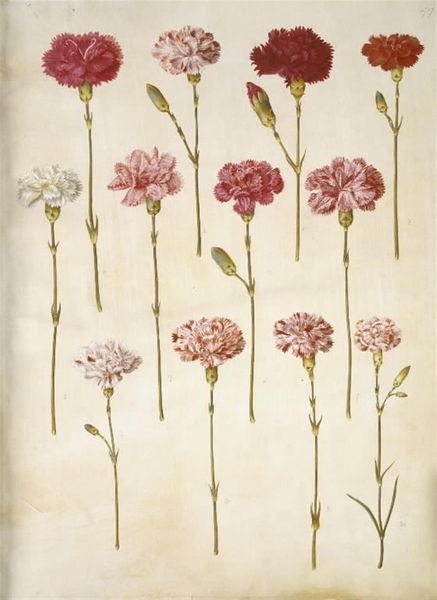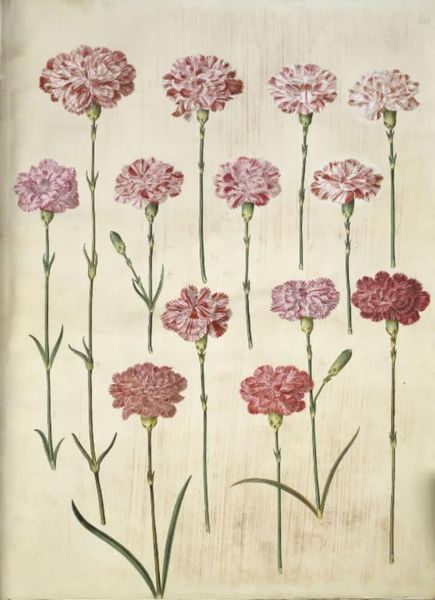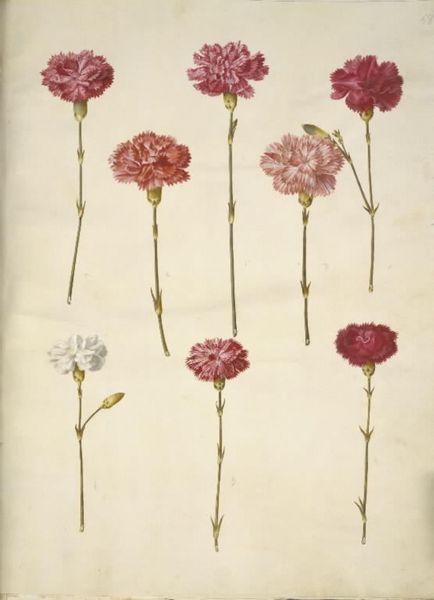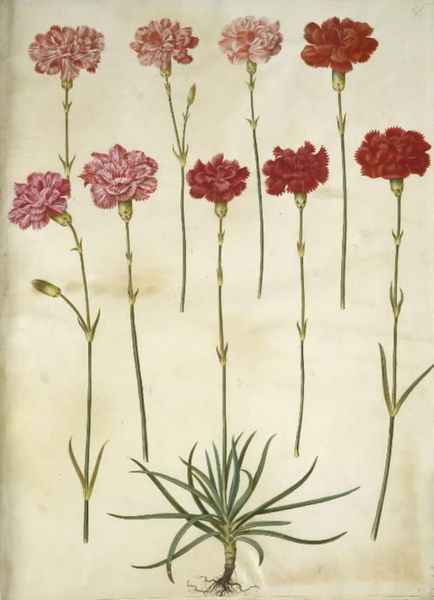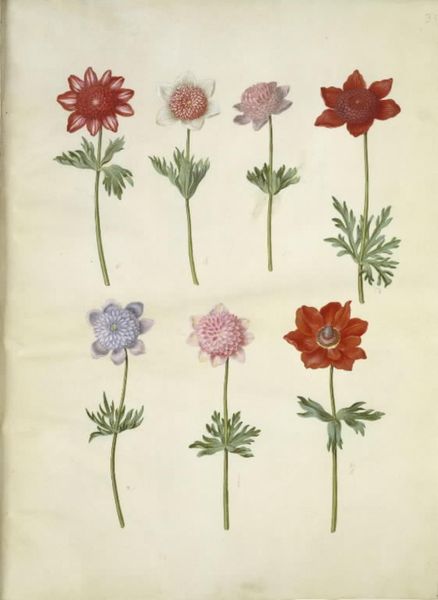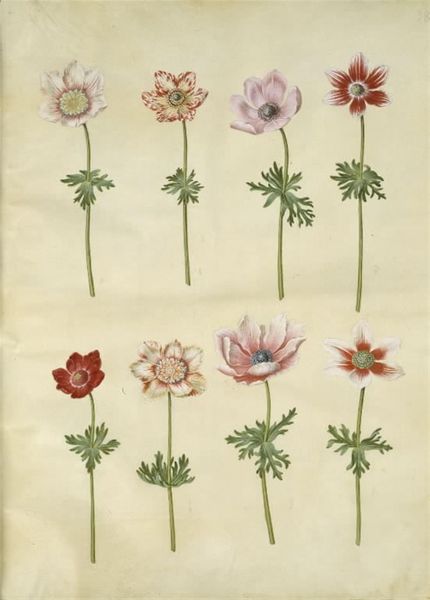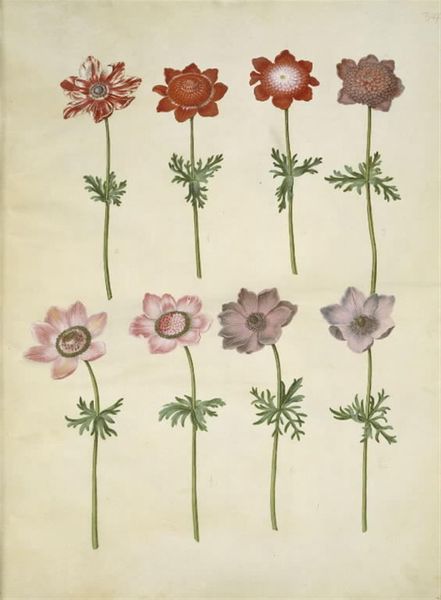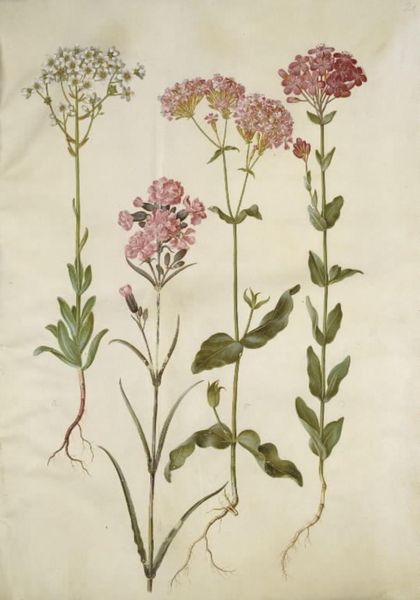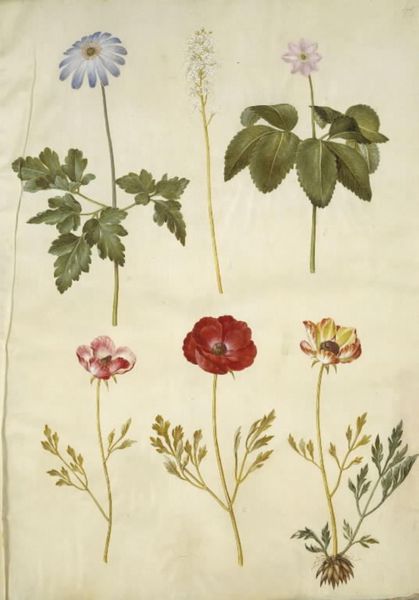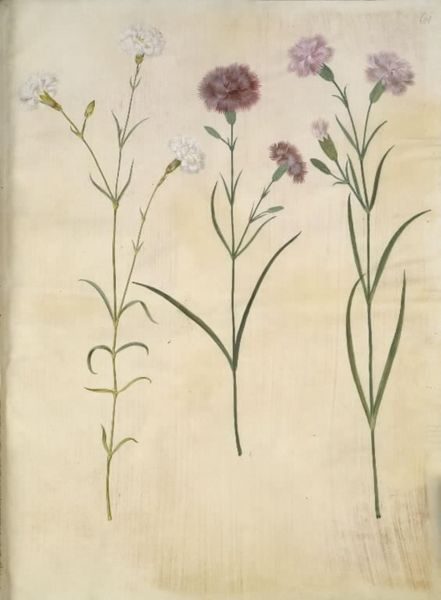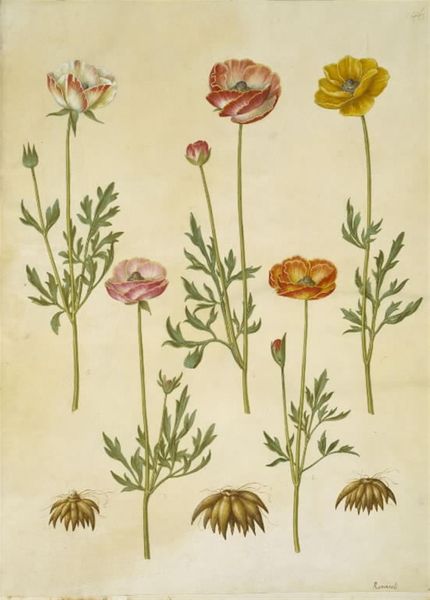
drawing, gouache, watercolor
#
drawing
#
water colours
#
baroque
#
gouache
#
watercolor
#
watercolour illustration
#
watercolor
Dimensions: 505 mm (height) x 385 mm (width) (bladmaal)
Curator: This delicate work, created between 1649 and 1659, is titled *Dianthus caryophyllus (have-nellike)* by Hans Simon Holtzbecker. It’s rendered in watercolor and gouache. Editor: It's utterly charming! So simple, but also so meticulous. The soft watercolors give the carnations a fragile, almost ethereal quality. I am immediately struck by the craft here. Curator: Absolutely. Holtzbecker’s meticulous botanical studies served a crucial function. He documented specimens in the service of science and the expansion of botanical knowledge through images. His patrons included powerful people of the era and royal families. Editor: Right, so we're seeing the influence of patronage playing out in material terms—the high-quality pigments, the precise execution of the watercolor, it's all indicative of skilled labour supported by economic means. We can even extrapolate towards a nascent scientific culture, fueled by wealth and demanding precise depictions of natural objects like these carnations. Curator: And consider how this intersected with garden culture. These illustrations became commodities themselves, circulating in albums and collections that served both scientific and aesthetic purposes, reinforcing the social status of those who owned them. This type of image created an opportunity to learn, share, and enjoy botanical wonders among a privileged circle. Editor: The carnations themselves must've been fashionable status symbols; the cultivation of rare species becoming another marker of affluence and power. How interesting that Holtzbecker doesn't isolate a single flower, but offers multiple varieties together. It showcases both Holtzbecker's technique and the range of available specimens, right? Curator: Precisely. It speaks to the increasing accessibility, at least to certain social groups, of diverse plant species. This wasn't merely about scientific accuracy; it was also about displaying the collector's reach and influence. Editor: The labor that went into cultivating the different species mirrors the labour invested in the image itself! It’s a potent reminder of art's intrinsic connection to socio-economic conditions. Curator: Indeed. By examining the historical and material context, this work reveals the multifaceted nature of artistic production. Editor: I’m definitely appreciating these dainty flowers from a different, much more grounded perspective now!
Comments
No comments
Be the first to comment and join the conversation on the ultimate creative platform.
